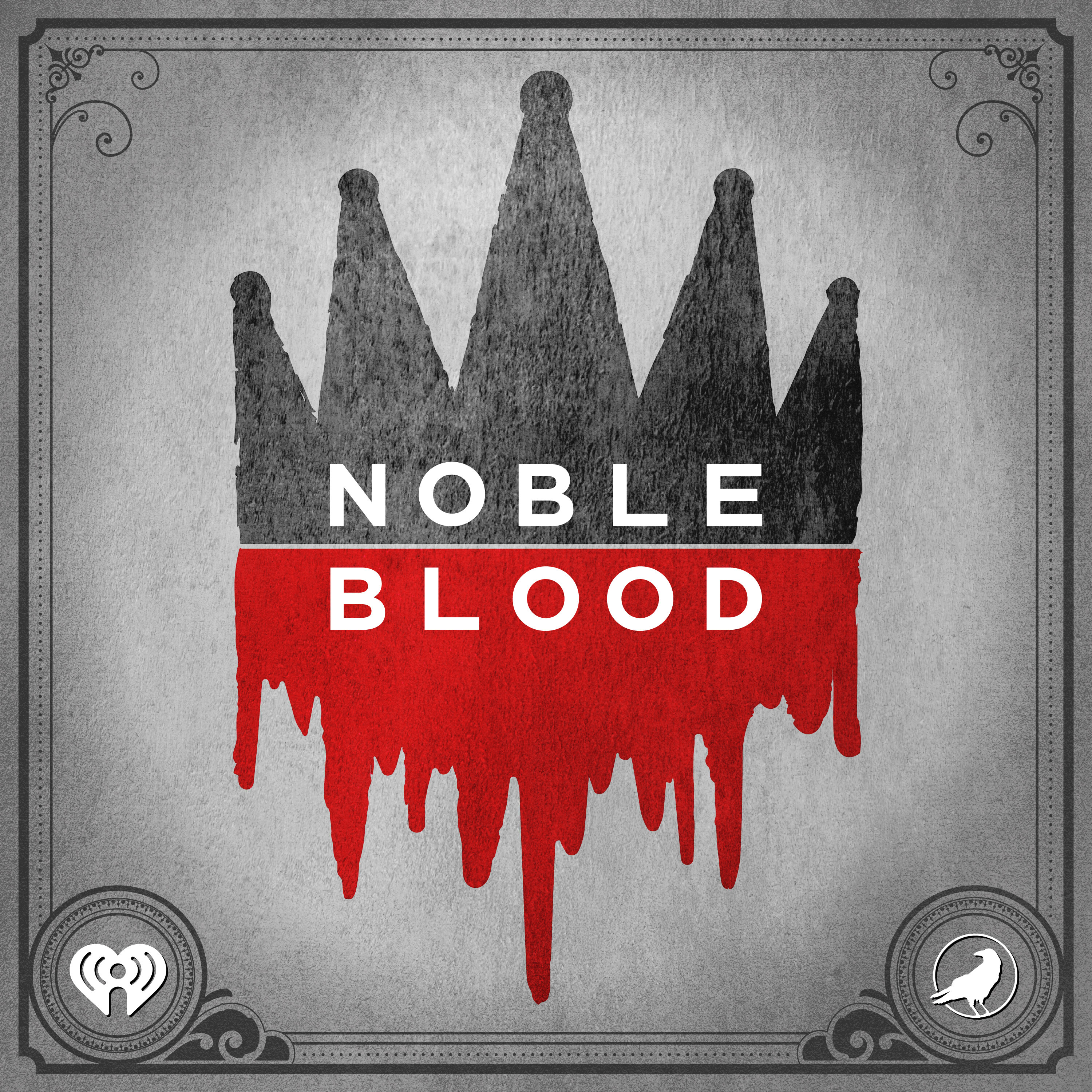
Door Key
I find myself drawn to the more social side of history than dates or battles. While I do think dates and battles are important, I find questions like ‘When did Catherine of Aragon realize she'd lost Henry VIII’s love to Anne Boleyn?’ or ‘Just what exactly was Aaron Burr's deal?’ to be what really fascinates me about history. This is the lens that I view history from on the Door Key Podcast (and the accompanying Substack newsletter) because I'm a dork with a deep love of history who wants to talk about it.
https://doorkey.substack.com/
Door Key
The Sweating Sickness
I would love to hear from you - click here to send Door Key a written message!
This episode of the Spooktacular is about The Sweating Sickness! This mysterious and deadly disease swept through England and Europe in the late 15th and 16th centuries. Beginning in 1485, this contagious illness caused sudden onset symptoms, and would often lead to death within hours.
This episode explores the chaotic historical context of outbreaks of The Sweating Sickness, including its impact on society and the theories surrounding its unknown cause. Drawing on accounts from people who were living through it, this episode also discusses the fear and superstition that gripped the population during these epidemics. The Sweating Sickness remains a frightening mystery in medical history, which is why it’s a great subject for the Spooktacular!
☕️ Production and Marketing assistance provided by Coffeelike Media
⚰️ The D.E.A.D. Podcast, hosted by Desi
https://open.spotify.com/show/210H96uUVr1aRV7qpVaHfK?si=IPTNZFicSoW_E1Sohc7FQw
Subscribe to the Door Key Substack newsletter FREE and paid options:
https://doorkey.substack.com/
Follow Door Key on Social Media:
- Facebook: https://www.facebook.com/groups/1040108179952433
- Instagram: https://instagram.com/doorkeypod
- Threads: @doorkeypod
- LinkedIn: http://www.linkedin.com/in/doorkeypod
- Email: doorkeypod@gmail.com
Support Door Key:
- Become a paid subscriber on the Door Key Substack newsletter: https://doorkey.substack.com/
- Buy me a cup of coffee: https://www.buymeacoffee.com/doorkeypod
- Make a donation via PayPal: https://paypal.me/Doorkeypod?country.x=US&locale.x=en_US
- use our Buzzsprout affiliate link to host your podcast on this platform
The Sweating Sickness
Hello everyone! And welcome to week 2 of the 2024 Spooktacular! When I think of Halloween, and spooky things, I immediately think of things like spiders and bats and witches, or scary movies that I love like The Others, or The Strangers, or Nightmare on Elm Street. You know, typical spooky stuff. But as I’m writing episodes for The Spooktacular, I’m also right in the middle of watching and recapping the first season of the show The Tudors for paid members of my Substack (I know, I know … it’s a shameless plug!) Anyway … there’s an episode of the first season called ‘Message to the Emperor’ that I think of in my head as ‘The Sweating Sickness episode’. In this episode, a mysterious deadly illness they call The Sweating Sickness hits Henry VIII’s court. It kills people and causes a lot of chaos. I’ll be honest, it’s been years since I’ve watched The Tudors and I’m having a lot of fun with it, but watching The Sweating Sickness episode after living through the Covid pandemic … well, it just hit different for me! That episode has been on my mind ever since I rewatched it. I decided to do an episode of the Spooktacular about The Sweating Sickness because I realized that Spooky doesn’t have to be something like a spider or a bat or even a Spooky movie – sometimes it can be something invisible like a virus or bacteria.
So what was The Sweating Sickness? Also known as the sweats, English sweating sickness, English sweat, or even sudor anglicus in Latin, it was a mysterious and contagious disease that struck England and later continental Europe in a series of epidemics beginning in 1485. There were other major outbreaks of the Sweating Sickness – in 1508, 1517, 1528, and the last outbreak in 1551, after which the illness apparently vanished.
The onset of symptoms of The Sweating Sickness was sudden, and often ended in death, which often happened within hours. Epidemics of The Sweating Sickness were different from other disease outbreaks of the time: other epidemics were typically urban and long-lasting, but cases of Sweating Sickness spiked and then went down very quickly. It also heavily affected rural areas. The cause of The Sweating Sickness remains unknown to this day, although it has been suggested that an unknown species of hantavirus was responsible. There are many things I’m not, and a doctor is on the top of that list, so I won’t be speculating on what The Sweating Sickness was or what caused it here. I’m just going to be talking about it from a historical perspective, and try to imagine what it would have been like for the people living through it back then.
There was a man named John Caius who lived in Shrewsbury in 1551. He was a doctor, and when there was an outbreak of The Sweating Sickness, he described the symptoms and signs of the disease in A Boke or Counseill Against the Disease Commonly Called the Sweate, or Sweatyng Sicknesse in 1552. This book is the main historical source of knowledge of the disease. According to the book, The Sweating Sickness would begin very suddenly with a sense of apprehension, followed by cold shivers (sometimes very violent), dizziness, headache and severe pains in the neck, shoulders and limbs, with great exhaustion. The cold stage of this disease might last from half an hour to three hours, then the hot and sweating stage would begin. Then the characteristic sweat would suddenly break out without any obvious cause. People who caught The Sweating Sickness would experience: a sense of heat, headache, delirium, rapid pulse, and intense thirst … then the sweat. Pain in the heart and palpitations were frequent symptoms of patients. In the final stages of the disease, there was either general exhaustion and collapse or an irresistible urge to sleep. Dr. Caius believed it was fatal if the patient were allowed to fall asleep. Catching this disease once didn’t give the person immunity, and some people suffered several bouts of it before dying. The Sweating Sickness typically lasted through one full day before recovery or death took place. The disease tended to occur in summer and early autumn.
So that’s a general overview of The Sweating Sickness. Part of what’s so scary about it to me is how little we know about it, its causes or how it was spread. And that’s looking back on it - to think about this when it was happening, before any kind of modern medicine or even germ theory … it had to be absolutely horrifying to the people living through it.
There’s an account of The Sweating Sickness by a man named Thomas Forestier. He was also a doctor during the first outbreak, and provided another written account. This was an account of his own experiences with the sweating sickness in 1485. Dr. Forestier put a lot of emphasis on the sudden breathlessness commonly associated with the final hours of sufferers. Forestier claimed in an account written for other physicians that what he called ‘loathsome vapors’ had congregated around the heart and lungs.
How this disease even spread is still mostly a mystery, with only a few pieces of written evidence. The Sweating Sickness did greatly affect the rural and working classes of the time, but it didn’t discriminate: it affected the young or old, regardless of class. Based on recorded accounts, the mortality rate among victims was highest in males aged 30 – 40. The fact that it infected all levels of society, from rich to poor, earned it various nicknames, such as "Stoop Gallant" or "Stoop Knave", which is said to reference how the higher classes were forced to 'stoop' and face their own humanity, giving up their higher status.
The large number of people that were in London to witness the coronation of Henry VII is said to have possibly accelerated the spread of the disease. I learned that fact researching this episode, and couldn’t help but think ‘Are they saying that Henry VII’s coronation might have been a Super-Spreader Event?’.
The cause of The Sweating Sickness is still unknown. Some things people have considered then and now is sewage, poor sanitation, and contaminated water supplies. The first confirmed outbreak was in August 1485 which was at the end of the Wars of the Roses. This led to speculation that it may have been brought from France by French mercenaries. There’s no written account of The Sweating Sickness before the battle of Bosworth though, so there aren’t enough records to be certain. But the Croyland Chronicle does mention that Thomas Stanley, 1st Earl of Derby named The Sweating Sickness as reason not to join Richard III's army before the Battle of Bosworth, so it seems to me like might have already been around by then.
A disease that’s spread by ticks and lice, called Relapsing fever has been proposed as a possible cause. Relapsing fever mostly happens during summer, like The Sweating Sickness. However, there’s typically a prominent black scab at the site of the tick bite and a skin rash with relapsing fever which there wasn’t with The Sweating Sickness.
Researchers have noted that symptoms of The Sweating Sickness overlap with symptoms from hantavirus pulmonary syndrome, and so have proposed a possible unknown hantavirus as the cause of The Sweating Sickness. Hantaviruses are zoonotic diseases that are carried by bats, rodents, and other small animals. Similarities between hantavirus and The Sweating Sickness, like seasonal occurrences, fluctuations multiple times a year, and occasional occurrences between major outbreaks, suggest The Sweating Sickness may have been rodent borne. Hantavirus infections also usually affect middle-aged adults. And one of the things that makes The Sweating Sickness different from most other epidemics of the medieval ages was that it affected the middle aged. So those are some of the ways The Sweating Sickness and hantavirus were alike. This idea that there’s a connection between The Sweating Sickness and hantavirus does have its criticisms though. One criticism is that The Sweating Sickness randomly disappeared and then was seen infecting isolated people, while hantavirus doesn’t work that way. Another criticism is that The Sweating Sickness was thought to have been transmitted from human to human, while hantaviruses are rarely spread that way.
In 2004, a microbiologist suggested that The Sweating Sickness may have been an outbreak of anthrax poisoning. It’s been suggested that the people who caught The Sweating Sickness may have been infected with anthrax spores present in raw wool or infected animal carcasses, and suggested exhuming people who died of The Sweating Sickness for testing. I for one am all in favor of testing like this – let’s go science!
Numerous attempts to discover where The Sweating Sickness came from using molecular biology methods have failed due to a lack of DNA or RNA. This is too bad, but I’m hopeful that one day science will find a way.
There’s a scholar named John Ashdown-Hill who believes that Richard III fell victim to The Sweating Sickness the night before the Battle of Bosworth. Ashdown-Hill believes that this accounted for Richard’s sleepless night and excessive thirst in the early part of the battle. There’s no definitive statement that The Sweating Sickness was present before the Battle of Bosworth, but like I said before, there was mention of The Sweating Sickness in Croyland Chronicle before the battle, so it seems to me like it was already around by then. In any case, the winner of Bosworth, Henry VII, got to London on August 28, 1485, and the disease broke out there on September 19. The disease killed several thousand people then it disappeared in late October that year. This sounds terrifying to me.
As you can imagine, a lot of superstition and paranoia came with this new plague. As chaos, grief, anger, and fear of this disease spread, people searched for someone to blame for it. Some people started to believe the disease was sent by God to punish them. Another disease that had a lot of superstition and paranoia around it was The Black Death. But The Sweating Sickness was very different from the Black Death in many ways.
The Sweating Sickness reached Ireland in 1492, when the Annals of Ulster record the death of James Fleming, 7th Baron Slane from the ‘perspiring plague, newly come to Ireland’. The book Annals of Connacht also record this obituary, and the book Annals of the Four Masters record ‘an unusual plague in Meath’ that lasted 24 hours. People seemed to recover from it if they survived it beyond that 24-hour period. It didn’t affect infants or children. English chronicler Richard Grafton mentioned the sweating sickness of 1485 in his work Grafton's Chronicle: or History of England. Grafton noted that the common treatment of the disease was to go immediately to bed at the first sign of symptoms. Once in bed, the sick person was to remain absolutely still for the entire 24-hour period of the illness, abstaining from any solid food and limiting water intake. All I can say about this is … it was 1485, and they were doing the best they could!
The Sweating Sickness wasn’t recorded from 1492 to 1502. However, it’s thought that it may have been the illness that afflicted Henry VII's son Arthur, Prince of Wales, and Arthur's wife, Catherine of Aragon, in March 1502. Their illness was described as ‘a malign vapour which proceeded from the air’. Catherine recovered, but Arthur died on April 2, 1502 in his home at Ludlow Castle. Arthur was fifteen years old. Again, we don’t know if it was The Sweating Sickness that killed Arthur or not. Researchers who opened Arthur's tomb in 2002 could not determine the exact cause of his death.
A second, less widespread outbreak occurred in 1507, which was then followed by a third and much more severe epidemic in 1517. A few cases of The Sweating Sickness may have also spread to Calais. In the 1517 epidemic, the disease seemed to mainly affect the English – the ambassador from Venice at the time commented on the strangely low number of cases in foreign visitors. A similar effect was noted in 1528 when Calais experienced an outbreak. However, the 1528 outbreak, which was the fourth outbreak, reached epidemic proportions. The earliest written reference to it was on June 5, 1528. A letter from Brian Tuke to Bishop Tunstall of London said that he had fled to Stepney to avoid infection from a servant at his house who was ill with quote ‘The Sweat.’. This suggests that it broke out in London at the end of May. The Sweating Sickness then spread all over England. It didn’t reach Scotland, but it did reach Ireland where Lord Chancellor Hugh Inge died on August 3, 1528. Mortality was very high in London. Henry VIII broke up his court and left London, frequently changing his residence, which is where that episode of The Tudors that I mentioned earlier that inspired this episode comes in. In 1529, Thomas Cromwell lost his wife and two daughters to the disease. It’s believed that several of the closest people to Henry VIII got this disease. His love letters to Anne Boleyn at the time show that Anne had gotten the illness as well. Henry sent a trusted doctor to her and she survived. Cardinal Wolsey also contracted this illness and he survived.
The Sweating Sickness was brought to Hamburg by a ship from England in July 1529. It spread all over Europe in September that year, except for Italy and France. The Sweating Sickness did show up in Flanders and the Netherlands. It also appeared in both the cities of Antwerp and Amsterdam on the morning of September 27. In each of these places, it was there for a short time, usually not more than two weeks. By the end of 1529, it had entirely disappeared except in the eastern part of Switzerland, where it lingered into the next year. The Sweating Sickness didn’t recur on mainland Europe.
The last major outbreak of The Sweating Sickness occurred in England in 1551. Although burial patterns in smaller towns in Europe suggest that the disease may have been present elsewhere first, the outbreak is recorded to have begun in Shrewsbury in April. It killed around 1,000 people there, spreading quickly throughout the rest of England and then pretty much disappearing by October. It was more present in younger men than other groups. There’s the eyewitness account by John Caius that I mentioned earlier, but a man named Henry Machin also recorded it in his diary. I’m going to read from this diary to you. Just a heads up: it is in English, but it’s early modern English, so might sound off:
The Diary of Henry Machyn
The 7 day of July began a new sweat in London…the 10 day of July 1551 the King’s grace removed from Westminster unto Hamton court, for there died certain beside the court, and caused the King’s grace to be gone so soon, for there died in London many merchants and great rich men and women, and young men and old, of the new sweat…the 16 day of July dead of the sweat the 2 young dukes of Sufolk of the sweat, both in one bed in Cambridge-shire…and their dead from the 7 day of July unto the 14 dead of the sweat in London of all diseases… 872 and no more in all
The Annals of Halifax Parish of 1551 records 44 deaths in an outbreak there. An outbreak of what was called 'Sweating Sickness' occurred in Tiverton, Devon in 1644 and was recorded in Martin Dunsford's History. It killed 443 people, 105 of them were buried in October. However, no medical details were recorded, and the date falls well after the generally accepted disappearance of the 'Sweating Sickness' in which is in 1551, so it’s not known if this was THE Sweating Sickness or not.
Between 1718 and 1918 an illness with some similarities to The Sweating Sickness occurred in France. It was known as the Picardy sweat. It was much less lethal than the Sweating Sickness but there was a really high number of outbreaks. It was noted that there was a great similarity between The Sweating Sickness and the Picardy sweat, like intense sweating and fever. However, there were also notable differences between the Picardy sweat and The Sweating Sickness. Picardy came with a rash, which was not described as a feature of the Sweating Sickness. The Picardy sweat also appears to be different from the Sweating Sickness in that people who slept close to the ground and/or lived on farms appeared to be more susceptible. This supports the theory that the disease could be rodent borne, which is common in hantaviruses. And now we’re back where we started, talking about hantavirus so I think I’ve said as much as I can about The Sweating Sickness.
The Sweating Sickness is scary to me now in modern times when we have a decent understanding of how diseases work, and antibiotics. I can’t imagine how terrifying it would have been would have been when it happened. I think that episode of The Tudors that I call ‘The Sweating Sickness Episode’, did a really good job of showing how afraid everyone was and how powerless against The Sweating Sickness everyone was. It’s truly terrifying, and I think is a great example of historical horror. I’ve already mentioned several times on this podcast how grateful I am to be alive in a time with antibiotics, but I need to say it again – thank goodness for antibiotics! The disease known as The Black Death still pops up every now and then, and can now be cured with antibiotics. Since we’re not completely sure what The Sweating Sickness even was, I can’t even say if antibiotics would have been effective against it, but … I can’t lie, I feel better just knowing we have them!
Thank you for listening to the second episode of the 2024 Spooktacular! There’s even more spooky history coming up next week as we get closer to Halloween – until then, stay spooky everyone!
pharmaceutical-journal.com / historyextra / Britannica / Wikipedia
Production and Marketing assistance provided by Stephanie Fuccio of Coffeelike Media.
Podcasts we love
Check out these other fine podcasts recommended by us, not an algorithm.

Vulgar History: Regency Era
Vulgar History | Realm
Presidencies of the United States
Evergreen Podcasts
World Herstory
Tabitha Bear
History with Jackson
History with Jackson
Civics & Coffee: A History Podcast
Alycia Asai
Deep into History
Deep into History
Plodding Through The Presidents
Howard & Jessica Dorre
You're Wrong About
Sarah Marshall
Our Fake History
PodcastOne
Noble Blood
iHeartPodcasts and Grim & Mild